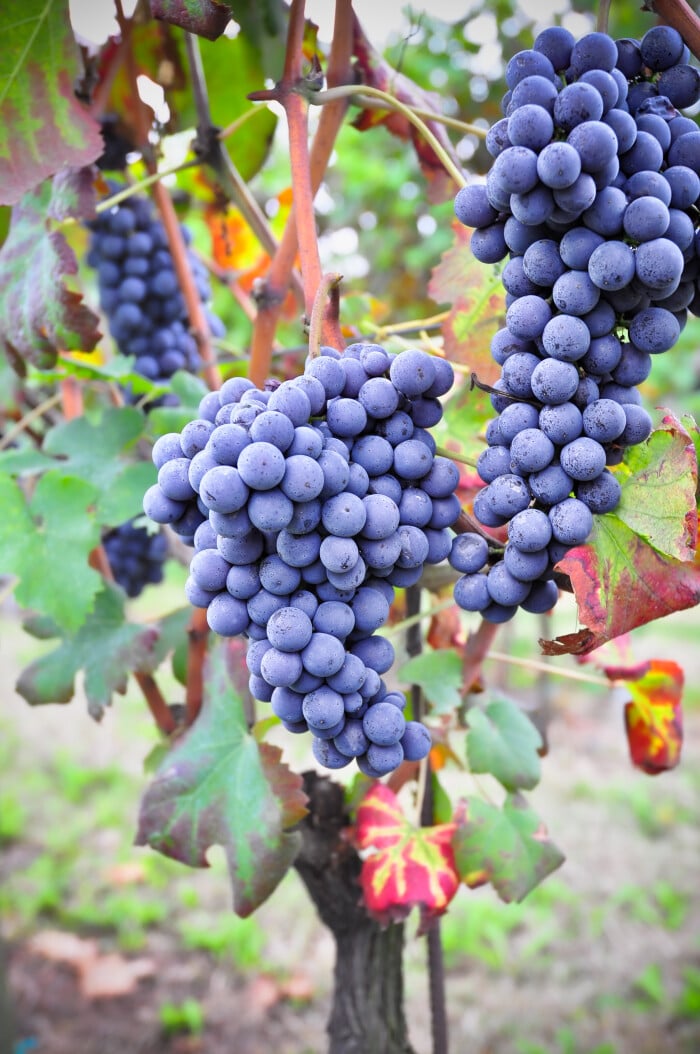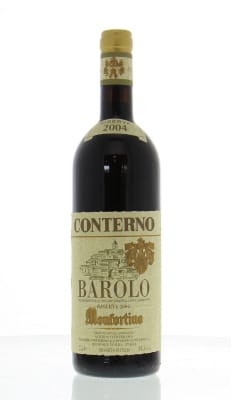
Nebbiolo
The northern Italian Barolo is often referred to as the ‘king of wines’. Hardly any other wine from Italy has such a high reputation. The wine owes this to its grape variety Nebbiolo, which is also the star in a number of other world-famous wines.
The grape of the Piemonte, Northern Italy. Piemonte is characterized by the morning mist in the valleys, the 'Nebbia'. Possibly this is where the name Nebbiolo comes from. World famous are the Barolo and Barbaresco wines made from this grape. The color of the wine made from the Nebbiolo grape is lighter, just like the Pinot Noir. The harvest is late because the grape needs time to ripen properly. Nebbiolo wines are often very powerful and aged in wooden barrels.
Taste
Red fruit (raspberry, strawberry), floral notes, earthy notes, dark notes (leather, tar).
Where does the Nebbiolo grape variety come from?
Officially, it is still not entirely clear where the grape originated. This is literally shrouded in mist. The root of the word ‘nebbia’ actually means ‘fog’. However, we can assume that the home of Nebbiolo is actually Piemonte in northern Italy. The grape was first mentioned in documents here as early as the 13th century. However, it was still referred to as ‘Nibiol’. There are two reasons why Nebbiolo is associated with fog. Firstly, morning fog rises in the valleys of Piedmont during the harvest season in autumn. Secondly, a white coating forms on the berries when they are fully ripe.
But back to the 13th century. At that time, Nebbiolo was spreading throughout northern Italy. In the La Morra region, it was appreciated. So good, so unspectacular. It was only in the 19th century that Nebbiolo experienced a real career boost. At that time, the Italian statesman Camillo Cavour hired the French oenologist Louis Oudart to create dry and long-lasting Barolo wines in the Bordeaux style. The result was a red wine that quickly found international acclaim.
Nebbiolo in the world
Let's not fool ourselves: Nebbiolo belongs in northern Italy. Of the approximately 6,000 hectares worldwide, around 5,250 hectares are in Italy. And here, in turn, Piedmont with its appellations Barolo and Barbaresco is the centre of it all.
Outside of Italy, Nebbiolo is a rather rare guest. In the United States, California, Oregon and Virginia are experimenting with Nebbiolo. California is achieving the best results due to its climate. Nebbiolo is also cultivated at high altitudes in the Argentine Andes. However, only on a very, very small scale. Some Australian regions with a temperate climate have started growing Nebbiolo, with a focus on dry red wines. There have also been some small-scale attempts to cultivate the grape variety in South Africa and Brazil, but without any notable success in terms of quality.
What does Nebbiolo taste like?
Fruity notes of cherry, elderberry and orange zest are typical of Nebbiolo. However, floral notes such as rose and violet and spicy aromas of tobacco, leather or dark chocolate are also commonly found. The latter come from barrel ageing. With a mature Nebbiolo, nuances of truffle or tar are also added.
On the palate, Nebbiolo is usually very easy to recognise by its high acidity and strong tannins. In fact, wines made from this grape variety benefit greatly from a few more years of bottle ageing. As they age, these wines develop a very impressive depth – and the tannins soften to become silky. For optimal enjoyment, we recommend a drinking temperature of 16 to 18 °C.
What are the ideal growing conditions for Nebbiolo?
There are good reasons why Nebbiolo thrives in Piedmont but rarely works in the rest of the world. The grape variety is extremely demanding. If it doesn't get exactly what it needs, the wines won't turn out well either. What Nebbiolo loves is a temperate climate with warm summers and cool nights, so that the grapes ripen slowly while still retaining their acidity.
Nebbiolo feels most at home on calcareous marl soils and on steep slopes facing south or southwest, which ensure optimal sunlight. The late ripening period makes Nebbiolo susceptible to weather fluctuations. In autumn, it must be neither too hot nor too cool – and it must not rain either, so that the grapes do not get mouldy. As you can see, Nebbiolo is quite a complicated grape. Fortunately, at least Piedmont fulfils all the conditions of the grape variety with flying colours.
Which wine-growing regions are known for Nebbiolo?
It will come as no surprise that we are focusing entirely on Piedmont at this point. Although very good Nebbiolo wines also come from Lombardy, the great wine icons all come from Piedmont. Let's take a closer look.
Barolo. Barolo is the most famous growing area for Nebbiolo. The region is located in southern Piedmont in the Langhe hills. The soils consist of calcareous marl, which gives the wines a special minerality. Barolo wines are powerful, tannic and long-lasting, with aromas of roses, tar and truffles.
Barbaresco. Barbaresco is also located in the Langhe hills, northeast of Barolo. The wines from Barbaresco are considered more delicate and somewhat more accessible than those from Barolo, as they mature more quickly. Nevertheless, they have an impressive structure and aromatic depth, with floral notes and a fine spiciness.
Gattinara. In northern Piedmont lies Gattinara, a historic growing region for Nebbiolo, where the variety is often called ‘Spanna’. The soils here are of volcanic origin and give the wines a pronounced minerality. Gattinara wines are somewhat lighter than Barolo or Barbaresco, but are characterised by elegance and longevity.
Roero. The Roero region is located north of Alba in Piedmont and produces fruitier and softer Nebbiolo wines. The sandy soils help to make the tannins less aggressive, making the wines more approachable. A Roero Nebbiolo is known for its floral aromas and fresh acidity.
Carema (Piedmont). Carema is a small DOC region in north-western Piedmont, near the border with the Aosta Valley. It produces finely structured Nebbiolo wines with floral notes and a pronounced minerality.
What food goes well with Nebbiolo?
The combination of Nebbiolo with truffles, especially white truffles from Alba, is legendary. Whether in combination with tagliolini, risotto or spaghetti al tartufo – the earthy notes of the truffles blend perfectly with the floral and spicy aromas of a Barolo or Barbaresco. Nebbiolo wines also go extremely well with game dishes such as venison, wild boar or partridge. The intense aromas of the wine complement the strong flavour of the game meat and balance its fat content with its high acidity.
Nebbiolo also goes well with vegetarian dishes. Roasted root vegetables, lentil dishes or a hearty lasagne with cashew ricotta are great accompaniments. The acidity and tannins of the wine balance out the richness of these dishes. Nebbiolo can also go surprisingly well with spicy Asian dishes, especially those based on soy sauce or fermented ingredients. A slightly spicy Nebbiolo d'Alba, for example, can go well with Thai dishes or stir-fried vegetables.
Three fun facts about Nebbiolo
- Until the 1850s, Barolo was actually a sweet wine. It was only the French oenologist Louis Oudart who changed this and made the wine dry for the first time.
- Nebbiolo is one of the world's slowest-ripening grape varieties. The grapes are often harvested late in October.
- Nebbiolo accounts for less than 10% of the total acreage in Piedmont – even though all the region's iconic wines are made from Nebbiolo.





